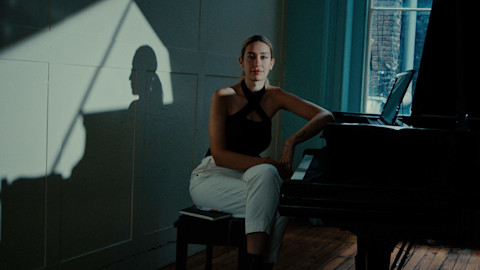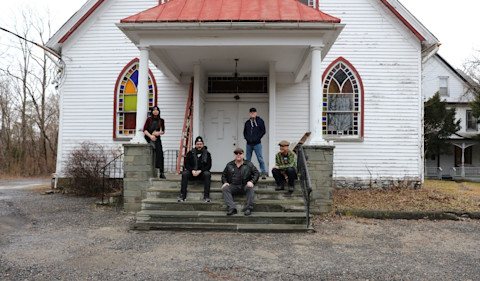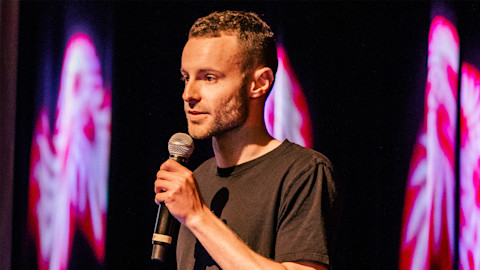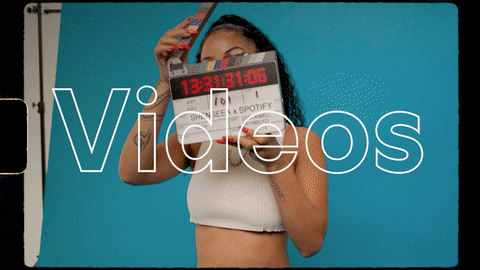Stories
Industry Insider: Secretly Group's Creative Director Robby Morris

The 34-year-old creative director talks about his career in music and gives us insight into the creative problem-solving, and image-making essential to releasing music in 2020.
Robby Morris is a man of a few indie music firsts. Over the last decade-plus, the 34 year-old has worked for three of the biggest, most successful indie music companies in the U.S., if not the world. Moreover, he’s done so in three completely distinct roles, each of which has not been brand new only for him, but for the company as well. Morris joined Domino Records’ American operation straight out of NYU, as the first outside employee of its then-start-up music publishing arm. At Beggars Group’s Matador Records, he was the famed indie-rock imprint’s first-ever A&R hire. And when after a long stint there, Morris decided to do something different, he joined the Secretly Group as it’s inaugural creative director. If the idea of a creative director at a record label seems novel, well...yes. There aren’t many out there. Yet. Which is why we wanted to speak to Morris about what the role actually entails — among other 2020 and artist-related insights, he is well-experienced to deliver.
Spotify for Artists: Can you describe what you do? And tell us how you got there?
Robby Morris: My title is Creative Director at Secretly Group, which comprises the Dead Oceans, Jagjaguwar, and Secretly Canadian labels.
I grew up in the Bay Area going to shows at a great all-ages venue called The Outhouse in Los Gatos, California. Bands of all shapes and sizes would play there — hardcore punk, indie bands, some bigger names like Ted Leo and Rilo Kiley. I was also going to punk and hardcore shows at houses in San Francisco or Santa Cruz, and at Gilman. I went to New York for a summer in high school and that blew my mind. The fact that I could see two or three bands a night — going to ABC No Rio, or Brownies — I realized I had to get to New York. So I applied to NYU, and jumped in. I studied English, but I spent all my time at the radio station [WNYU]. I probably liked doing the music director stuff more than being on the air, getting sent CDs from labels all over the world. It was amazing to be able to cherry-pick music that we were interested in and then putting it on the radio. Because of that, I developed conversations with people in the music industry, and learned how labels worked. The benefit of being in New York was that a lot of music pluggers or promotional companies would invite me to shows, where I started meeting more people and discovering the scene — or many scenes rather. As college was coming to a close, I didn't know what I wanted to do. Someone suggested I intern, so I did at Domino, and ended up working there in the music publishing department. (I was the first employee in their U.S. publishing company.) I jumped into the job before I even technically graduated.
From there, I got a call from Matt Harmon [President of] Beggars group, and he was like, "There's this job opening over here." It was a college radio promotions job. I was like, "I don't know if I want to be on the other side doing this.” But in one of the interviews, they mentioned that Matador had just signed Fucked Up and Jay Reatard. I was like, "Oh my God. That's amazing." I'll go up there if I can work with those bands. I did radio for about a year; then an A&R job opened at Matador and I went for it. I spent the next nine years doing that. Matador is a label with a really strong brand and A&R sense, so the job was both, helping those guys find new stuff, but also working with the bands that were already on the label, helping keep projects flowing, getting records made, working with art and thinking about visual presentation, creative marketing and stuff like that. We weren't really about who signed what, or bands having specific A&R people. It was a team effort, making sure everyone has a little bit of ownership.
As I was getting close to the 10-year mark there, I decided I want to try something new. I found myself enjoying what happens after a band gets signed. I love discovering new music, but I was finding more joy in helping artists develop — make the record, find their visual and creative voice, figure out how to help tell their stories. With A&R, a lot of the job is selling yourself, and what I found more rewarding was helping artists spread or augment their vision. This opportunity opened at Secretly Group, a great label with classic records I love, and so I ended up shifting over here and picking up this role as creative director.
That’s great. So, the million-dollar question is: what does a creative director do at a record label? It’s a title more familiar to people at advertising agencies than in the music industry.
It is an unusual title. From a traditional sense of the job, I manage and oversee the in-house art department: two art directors and a designer in house. (And we're hiring someone who can help us out with more motion-based design projects.) I don't have any design skills, but when doing A&R, I always loved sitting down with the art director, and working on ideas for album packages, coming up with what an artist’s visual universe is. I also commission music videos for the label and photos, all your traditional visual things.
From there, my job shifts into the creative marketing side of things. I do events (when events were a thing). I do other content, so if a band wants to make a documentary, or make an interactive website, I work with outside developers to help make these cool projects. The other big part is working with brands and third parties to help support or collaborate on bigger ideas. We've done a few great ones with Spotify, WeTransfer, Amazon, Facebook. Basically, it’s taking the heart of the record, finding out the story behind it, and using that as a way to present the project. That's where other exciting stuff starts happening, when you're showing and telling folks about a record. It gets artists imagining what's possible.
One Spotify example is a good one. It was for Bon Iver’s last record, which was called I,I. A big part of it was the fact that the community around the band had grown, and that it doesn't just include people who play [the instruments], but their visual collaborators, dancers, the touring party — they’re all part of the Bon Iver community. We presented that as a story, and Spotify came back with this cool web Viisualiizer. It was this website that counts how many people are listening to the record at any moment. It shows them in the form of eyes and uses an ASCII text generator to shift and change as more people join. It uses the platform and tells the story of the record at the same time.
Recently, we did this cool interactive thing with Microsoft and Moses Sumney. It was supposed to be an experiential event but obviously, the pandemic happened, so we pivoted into a content piece, using this hardware device called The Kinect, a camera that does motion tracking. Moses took it and worked with a visual collaborator he works with a bunch and made this really incredible session video.
Tell me how the pandemic has changed the way that you and your artists work together?
Working at a record label, I think we're a bit more fortunate than our friends in the live sector, and our artist partners. People are buying records, streaming records, and engaging with music more than ever. I think what's also going on is artists have a bit more time right now, because they're not on the road, so there's a lot of creativity happening. Artists are turning records around really quickly — or we've changed timelines around a bit to put things out fast.
At first, we were just looking for ways to promote records in the midst of a pandemic. A lot of artists were turning on their phones, and playing Instagram Live concerts. But as time has passed, we've taken stock of things, and the bar has been raised really high. I remember, when Phoebe Bridgers’ Punisher came out in June, she went live for, I think, Pitchfork; she was playing into her phone, and I remember her looking at me, and saying, “I've never done this before.” Flash forward and her recent performances for late night TV have been incredible, their quality has been insane. She just did a performance for Seth Meyers, which was recorded in a haunted theater in LA. Or we've had Angel Olsen and Kevin Morby each shoot four shows with a professional film crew. That's five hours of really high quality, great live performance footage that now exists, which is amazing.
The stay-at-home thing is interesting too. You used to have to go to Seattle to play on KEXP, or go to D.C. to play NPR’s Tiny Desk. Now, artists can make those with their friends or their visual collaborators and do amazing stuff. Moses just performed for AFROPUNK, and the performance was bonkers. I think we've seen very little, if any, art paralysis or this moment slowing artists down. We all had to become problem solvers, and it's spurred some really creative stuff.
How about the other side of what's going on in 2020? How have your artists been able to harness the label machinery and the pivot of the year to be able to serve social justice needs?
What happened in May and June just changed everything. We were sitting there saying, "How are we going to put some of these records out into the world?" Phoebe’s record release date was Juneteenth. It had to come out, it was locked in. [But] how are we going to promote an indie rock record on that day? Phoebe had a great idea: let's put it out a day early and use that as an opportunity to get fans excited, but also to get fans to go and look at some information that mattered. You know how when you see all the links to an artist nowadays, you get a Linkfire button, and it lets you choose if you want to buy the record from a shop, or if you want to listen to it on one of the DSPs? We made one of those, but instead, all the buttons were different links to various donation organizations or awareness groups, using the artist platform to be extremely thoughtful about justice. Every single one of our artists has worked to spread awareness and advocacy. Many of them, if not all, have done benefits, whether it's concerning the election, or Black Lives Matter. It's been pretty inspiring.
When you first meet an artist you’re about to work with, what do you look for? What is the difference between an artist you know will do well out the gate versus one who’ll be a little harder to collaborate with?
What I look for is imagination. A lot of artists — especially those Secretly labels sign — don't have resources to begin making the art or the visuals that they might want to. Having ideas — if not concrete ideas, then just being able to speak about who you are, and how you want to express yourself — is really important.
There's a lot of resources out there now. Social media is huge, and something to look at. It certainly helps to see the way artists express themselves on these platforms, where they're free. You can be funny, you can be politically engaged, you can be who you are. That's a great starting point. Then, what happens when you do have some resources? When you have a team working on your music? These are opportunities to make that imagination come to life.
We really focus on helping artists articulate what their story is, and what their vision is. On the visual side of things, we start really early, before records finish being recorded. We encourage bands to make mood boards. These can become record sleeves, they could become music videos, they can become a brief for a photoshoot. Some artists come to us and say, "Hey, I want my record sleeve to reference this or look like this." Others don't have that vocabulary, but if you have that mood board, putting that imagination down on paper — or Dropbox, or Pinterest or whatever — that's a great place to start.
Maybe another trait I look for is ambition. The creative ambition to want to maximize your voice, maximize your expression — the ambition to think big about what a record could be, or what a music video could be, or a stage show. Or a live stream.
I think one other thing especially important during the pandemic is — it's great to be prolific. Before this, [the labels] thought about campaigns in a traditional marketing sense, in timelines and how things got rolled out. These days, it's okay to do a lot, especially with one hand tied behind your back. If you can, go out and play shows, do stuff, do live streams, do sessions, create art. I think that giving fans more access … it's important.
– Piotr Orlov
Spotify for Artists helps you to develop the fanbase you need to reach your goals.
video
How Julia Wolf Made It



